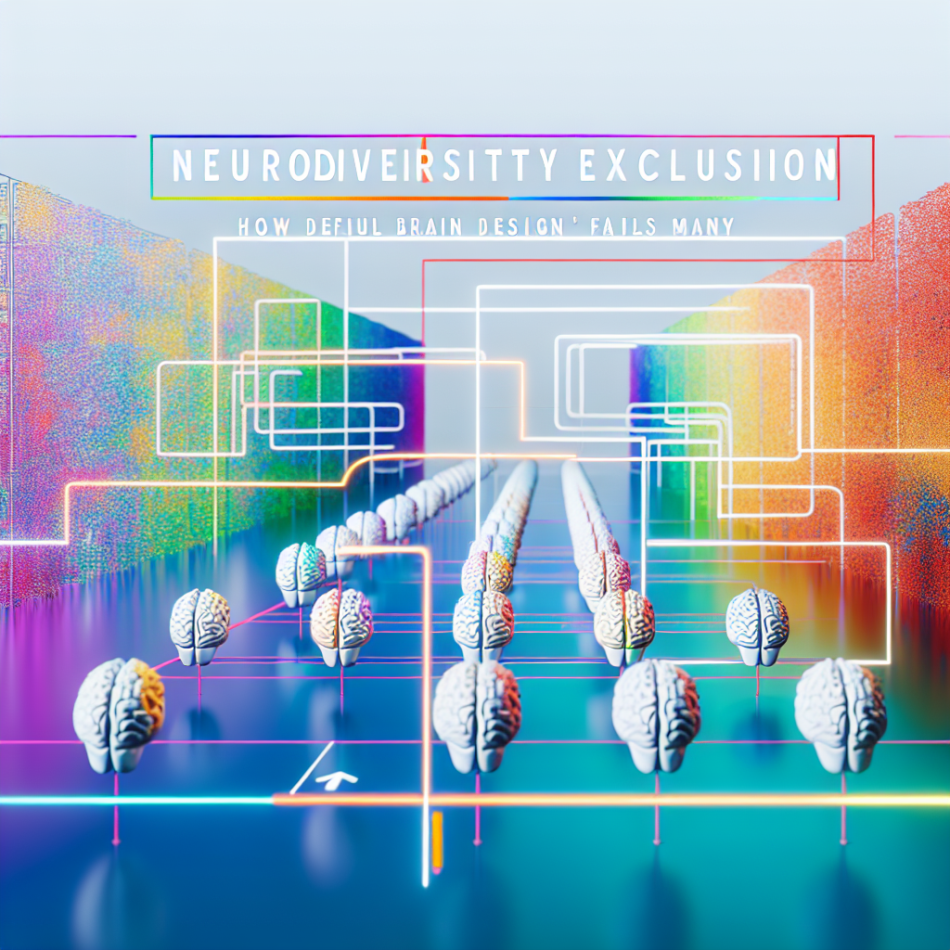How Schools and Workplaces Exclude Neurodiversity by Designing for a ‘Default Brain’
From fluorescent lighting to rigid schedules, many institutions operate on a narrow idea of how people think, learn, and work. This “default brain” assumption—often favouring neurotypical, able-bodied, and culturally dominant norms—creates barriers for those who diverge. This article explores how such design choices exclude neurodivergent individuals, people with disabilities, and marginalised groups, while offering pathways to more inclusive environments.
The Myth of the ‘Default Brain’ in Institutional Design
The concept of a “default brain” stems from historical biases that prioritise linear thinking, sensory uniformity, and conformity. Schools and workplaces often assume ideal users are extroverted, able to focus for hours without breaks, and thrive in high-stimulus environments. These assumptions ignore neurodiverse conditions like ADHD, autism, or dyslexia, as well as physical disabilities and cultural differences in communication styles. For example, open-plan offices assume collaboration benefits everyone, despite overwhelming sensory-sensitive individuals.
Education Systems Built for Conformity
Traditional classrooms reward sitting still, auditory learning, and timed exams—practices that disadvantage students who think creatively, require movement, or process information differently. A child with autism might struggle with bright lights and unpredictable noise, while a dyslexic student could be labelled “slow” due to rigid reading benchmarks. Meanwhile, gifted neurodivergent students often disengage when curricula lack flexibility. Standardised testing exacerbates this by measuring narrow academic proficiencies, sidelining strengths like problem-solving or lateral thinking.
Workplace Environments and the Neurotypical Blueprint
Many workplaces enforce a similar rigidity. Strict 9-to-5 schedules disregard those with circadian rhythm differences, while verbal-heavy meetings exclude employees who communicate best in writing. Performance reviews often penalise unconventional working styles, such as needing frequent breaks or asynchronous tasks. Even office layouts—open spaces with minimal privacy—assume extroversion and sensory tolerance, alienating introverts or those with sensory processing disorders. These structures equate productivity with conformity, leaving little room for diverse cognitive approaches.
Who Gets Excluded? The Human Cost of Uniform Design
The fallout of this one-size-fits-all mindset is profound:
- Neurodivergent individuals: Autistic employees may face burnout from masking their traits, while ADHDers struggle with monotonous tasks.
- People with physical disabilities: Poor lighting or inaccessible spaces compound daily challenges.
- Cultural minorities: Communication norms (e.g., direct vs. indirect speech) may clash with workplace or classroom expectations.
These groups often internalise exclusion as personal failure, leading to anxiety, depression, or career disengagement.
The Ripple Effects of Exclusion
Beyond individual harm, institutional inflexibility stifles innovation. Neurodivergent minds excel at pattern recognition, big-picture thinking, and creative problem-solving—skills crucial in dynamic industries. By sidelining these talents, organisations limit their adaptability. Schools, too, undermine societal progress by prioritising compliance over critical thinking. The economic cost is staggering: a 2020 UK study found that supporting autistic employees could contribute £88 billion annually through improved productivity and retention.
Redesigning Institutions for Cognitive Equity
Inclusive design starts with recognising neurodiversity as a strength, not a defect. Practical steps include:
- Flexible learning/working models: Hybrid schedules, breakout spaces, and project-based assessments.
- Sensory adaptations: Adjustable lighting, noise-cancelling zones, and tactile-friendly materials.
- Process inclusivity: Offering written feedback alongside verbal reviews, or using visual aids in training.
Critically, marginalised groups must co-design solutions—such as autism-led workplace training—to avoid tokenistic measures.
Conclusion: Beyond the Default—A Call for Cognitive Justice
Designing for a mythical “default brain” perpetuates inequality and wastes human potential. Schools and workplaces must shift from enforcing conformity to embracing neurodiversity through structural empathy. By prioritising flexibility, sensory inclusivity, and diverse communication styles, institutions can unlock creativity and resilience. The path forward isn’t accommodation—it’s reimagining environments where every mind belongs.
